#Le Fauconnier
Explore tagged Tumblr posts
Text
NL-4K-B
Hugo Bakker Korff (1824-1882, Den Haag) schilderde vaak huiskamertaferelen met wat oudere vrouwen in de hoofdrol. Ze zijn perfect geschilderd met oog voor detail; Leidse fijnschilderij zoals we dat kennen uit de zeventiende eeuw. Bakker Korff pleegde graag milde spot met de kleinburgerij waaruit hij zelf voortkwam. Een interieur waarin het aan niets ontbreekt met wat oude vrijsters; het is de…

View On WordPress
#17-de eeuws#19-de en 20-ste eeuws#arbeidersklasse#architectuur#binding#detail#ets#Expressionisme#fantasie#grafische techniek#groepen#huiskamer#impulsief#indruk#ironie#Jozef Israëls#kleinburgerij#kubistisch#kunstenaar#Le Fauconnier#Leiden#maatschappelijk relevant#milde spot#natuur#onderdeel#onderdrukt#onrecht#Oriënt#oudere vrouw#reizen
0 notes
Text

Henri Le Fauconnier - Daisies and chrysanthemums
17 notes
·
View notes
Photo

Henri Le Fauconnier (French, 1881-1946), L'Abondance [Abundance], 1910-11. Oil on canvas, 191 x 123 cm
78 notes
·
View notes
Text

Henri Victor Gabriel Le Fauconnier, The Huntsman
1 note
·
View note
Text

"L'Abondance" d'Henri Le Fauconnier (1910) à l'exposition “Le Paris de la Modernité (1905-1925)” du Petit Palais, Musée des Beaux-Arts de la Ville de Paris, décembre 2023.
2 notes
·
View notes
Text


stedelijk museum Alkmaar
(City Museum of Alkmaar) ‘’The starting point for anyone who wants to experience the history and art of Alkmaar’’
Location: Alkmaar, North Holland, The Netherlands Price: 13,50 / Students Free Duration: 1 - 2 hours Transport: Less than 10-minute walk from Alkmaar train station Language: Dutch, English Activities: Look at historic art, and learn about the fight of Alkmaar against the Spaniards. Date of visit: Wednesday 17th of May 2023 Expo at that time: Van Gogh, Cézanne, Le Fauconnier & de Bergense School.Website
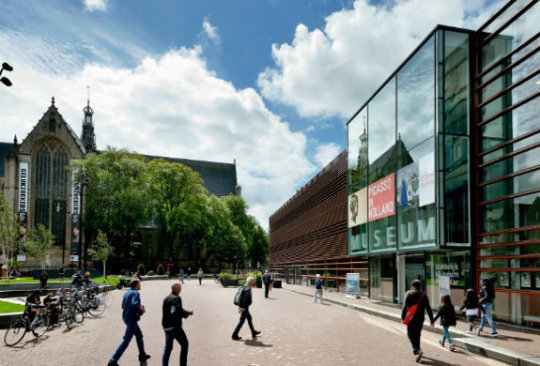
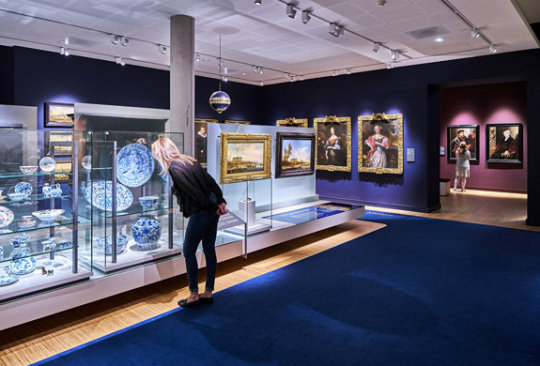

Classy When I entered the museum, I put my bags and jacked in a locker and got a ticket. Then I got an audio tour and a man explained to me how the museum worked. Just like Het mauritshuis there where museum guards standing on every corner, even tho most paintings by famous artists here (like van Gogh) were copies and not original. The paintings from other painters were real. I sadly didn't take any pictures since my phone was dead, and I didn't have a charger with me. In the expo, the audio tour told the story of artists that were heavily inspired by van Gogh, which was not a good thing back in the day. The art schools thought his work was lazy with big paint strokes and not mixing in all the colors right.
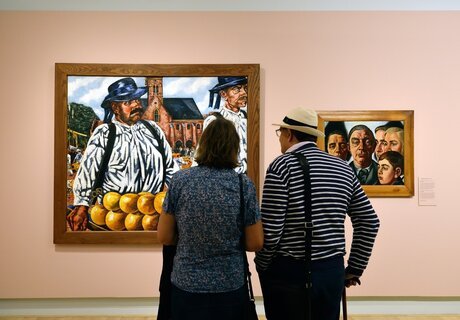

450 jaar Alkmaars ontzet it has been exactly 450 years since the Siege of Alkmaar. Where Alkmaar won from the Spanish and started the end of the 80-year war. The 80-year war (1568 – 1648)�� was started by religion, Spain kept taking in more land in the south and spreading Christianity. In the Netherlands, they believed in paganism and Norse mythology, later changed into rooms catholic by the Roman Empire. But now Christianity took over, which made a stronger divide between wealth, churches were really rich and people were really poor. De Beeldenstorm (Iconoclastic Fury) was the turning point in this and is seen as the start of the 80-year war. At the Beeldenstorm the Calvinists (major branch of Protestantism) went into churches and took down the riches, breaking statues, paintings, gold, and other things of worth. After the Spaniards heard from this disrespect for the religion they love so much, they came to ‘’safe the day and bring order’’. So they got 10,000 people executed for these deeds. They couldn't execute the prince of orange, but did take his belongings, including his son, back to Spain. This made everyone angry, and no one was on Spain's side anymore. Then a lot of fighting back and forth, even the French and English got in on it. And then 80 years later they made peace, however the Netherlands was not allowed to keep south Netherlands (now Belgium)
Because of Alkmaar's victory, other cities learned how to drive the Spaniards out. The whole basement of the museum is dedicated towards this war. In my opinion, this part of the museum was the most interesting, however, they were almost closing, so I felt rushed and couldn't take my time.
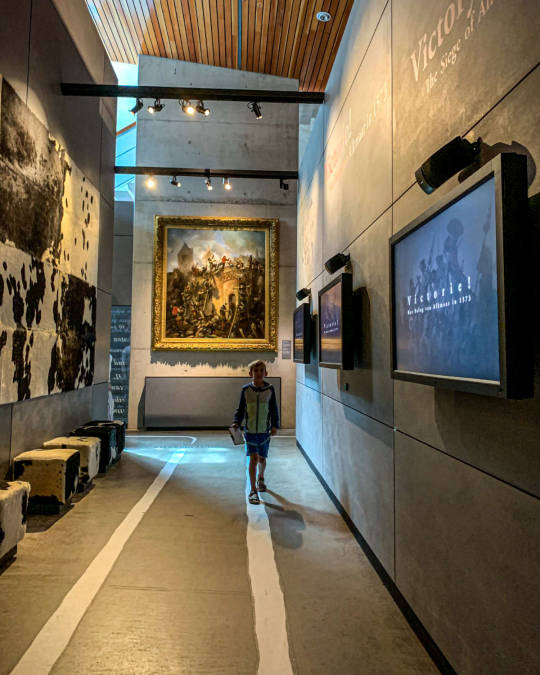

Would I pay the price: I find the price reasonable, and it's great that students and anyone under 18 get to go for free. Would I revisit it: Not really, maybe I just don't have that connection to Alkmaar, but it did not interest me that much. Who do I recommend it to: Historical art enthusiasts, or people from Alkmaar
Interactive: 3 Educational: 2 Storytelling: 4 Price: 4 Memorable: 2
Total score: 3
4 notes
·
View notes
Photo

Personnel de Maison dans un Château Médiéval Anglais
Un château médiéval anglais, du moins ceux de grande taille, pouvait avoir un personnel de maison d'au moins 50 personnes, comprenant toutes sortes de travailleurs spécialisés et qualifiés tels que des cuisiniers, des palefreniers, des charpentiers, des maçons, des fauconniers et des musiciens, ainsi qu'une équipe de chevaliers, d'archers et d'arbalétriers. La plupart des employés étaient payés à la journée et la sécurité de l'emploi était souvent précaire, en particulier pour les serviteurs les plus modestes qui étaient licenciés lorsque le seigneur du château s'absentait. Les travailleurs plus qualifiés, comme l'aumônier du château, l'intendant ou directeur général, et le maréchal, qui supervisait les hommes d'armes et les écuries, étaient payés à l'année et pouvaient recevoir de l'argent et des terres en échange de leurs loyaux services. Microcosme du monde médiéval, le personnel domestique travaillait en équipe pour répondre aux besoins souvent considérables du château en matière de nourriture, de défense et de divertissement.
Lire la suite...
2 notes
·
View notes
Text

Un petit storyboard de mon personnage Ilophée.
Pour le contexte, elle a été sauvée d'une vie vagabonde par le fauconnier royal, c'est ainsi qu'elle est devenue son apprentie une fois l'aval de la famille royale. Or elle vit toujours ostracisé des autres à cause de son origine.
Ici elle contemple l'un des tableaux royaux.
0 notes
Text
I maestri del Cubismo: Picasso, Braque e altri pionieri
Il Cubismo, movimento d'avanguardia nato in Francia all'inizio del XX secolo, ha rivoluzionato il modo di concepire l'arte. Sfidando la rappresentazione realistica della realtà, i cubisti frammentavano le forme e le riassemblavano in nuove composizioni geometriche, aprendo la strada a una visione più astratta e concettuale dell'arte. I maestri Pablo Picasso e Georges Braque sono considerati i padri del Cubismo. Insieme, svilupparono le due fasi principali del movimento: il Cubismo analitico (1907-1912), caratterizzato da una scomposizione geometrica rigorosa e da una tavolozza di colori neutri, e il Cubismo sintetico (1912-1914), che introdusse l'uso del collage e una maggiore libertà compositiva. Le opere di Picasso, come "Les Demoiselles d'Avignon" (1907) e "Guernica" (1937), sono icone del Cubismo e dell'arte moderna in generale. La sua genialità e il suo spirito sperimentale hanno contribuito a definire il linguaggio cubista e a influenzarne il successivo sviluppo. Braque, con il suo approccio più intellettuale e rigoroso, ha dato un importante contributo al Cubismo analitico. Opere come "Violino e candelabro" (1910) e "Le Clarinetto" (1910) esemplificano la sua abilità nel scomporre e riassemblare gli oggetti in composizioni astratte e geometriche. Oltre a Picasso e Braque, altri artisti hanno dato un importante contributo al Cubismo: Juan Gris, pittore spagnolo, ha sviluppato uno stile cubista più decorativo e colorato, con influenze dall'arte popolare e dal fauvismo. Opere come "Ritratto di Josette" (1916) e "Natura morta con chitarra" (1919) sono esempi del suo stile raffinato e armonico. Fernand Léger, pittore e scultore francese, ha portato al Cubismo una forte componente di realismo e monumentalità. Le sue opere, come "Nudo con turbante" (1917) e "La città" (1919), si caratterizzano per l'uso di forme geometriche elementari e colori vivaci. Robert Delaunay, pittore francese, è stato un esponente del Cubismo orfico, che combinava la scomposizione cubista con l'uso di colori vivaci e forme fluide. Opere come "La Tour Eiffel" (1910) e "Dischi simultanei" (1912) sono esempi del suo stile dinamico e astratto. Marcel Duchamp, artista francese, è noto per il suo "ready-made", oggetti quotidiani elevati a opere d'arte. La sua opera più famosa, "Fontana" (1917), un orinatoio rovesciato, ha sfidato le convenzioni artistiche e aperto la strada all'arte concettuale. Il Cubismo ha avuto un'influenza enorme sull'arte moderna, rivoluzionando la pittura, la scultura e l'architettura. I maestri di questo movimento hanno aperto la strada a nuove forme di espressione artistica e hanno contribuito a definire il corso dell'arte del XX secolo. Altri artisti cubisti importanti: - Albert Gleizes - Jean Metzinger - Henri Le Fauconnier - Francis Picabia - Gino Severini - Juan Gris - Raymond Duchamp-Villon - Jacques Villon Foto di Gerd Altmann da Pixabay Read the full article
0 notes
Text
Artist Research - David Hockney
Cubism
Cubism is an early-20th-century avant-garde art movement that revolutionised European painting and sculpture, and inspired related artistic movements in music, literature, and architecture. In Cubist works of art, the subjects are analysed, broken up, and reassembled in an abstract form—instead of depicting objects from a single perspective, the artist depicts the subject from multiple perspectives to represent the subject in a greater context. This representation of different views of the subject pictured at the same time or successively is also called multiple perspective, simultaneity or multiplicity.
Originating in France during the 1910s and throughout the 1920s, Cubism has been considered the most influential art movement of the 20th century. The impact of Cubism was far-reaching and wide-ranging. In France and other countries, movements such as Futurism, Suprematism, Dada, Constructivism, Vorticism, De Stijl and Art Deco developed in response to Cubism. Offshoots of Cubism also developed, including Orphism, abstract art and later Purism.
The movement was pioneered mainly by Picasso and Georges Braque, as well as other notable artists. One primary influence that led to Cubism was the representation of three-dimensional form in the late works of Paul Cézanne.
Cubism is broken down into phases. The first phase of Cubism, known as Analytic Cubism, a phrase coined by Juan Gris, was both radical and influential as a short but highly significant art movement between 1910 and 1912 in France. A second phase, Synthetic Cubism, remained vital until around 1919, when the Surrealist movement gained popularity. English art historian Douglas Cooper proposed another scheme, describing three phases of Cubism in his book, The Cubist Epoch. According to Cooper there was "Early Cubism", (from 1906 to 1908) when the movement was initially developed in the studios of Picasso and Braque; the second phase being called "High Cubism", (from 1909 to 1914) during which time Juan Gris emerged as an important exponent (after 1911); and finally Cooper referred to "Late Cubism" (from 1914 to 1921) as the last phase of Cubism as a radical avant-garde movement.
Proto-Cubism
Proto-Cubism lasted between 1907 and 1911. This was the early beginnings of what would become the Cubist movement. Pablo Picasso's 1907 painting Les Demoiselles d'Avignon has often been considered a proto-Cubist work
Another proto-cubist series of works was George Braque’s exhibition collection in Kahnweiler Gallery. A critic at the time, Louis Vauxcelles noted Brauqe’s nature of "reducing everything, places and a figures and houses, to geometric schemas, to cubes.”
This carried on. Critic Henri Matisse is known to have disparaged Braque’s pictures as “painting made of small cubes.” The critic Charles Morice also spoke of Braque's cubes. The motif had inspired Braque to produce three paintings marked by the simplification of form and deconstruction of perspective.
Georges Braque's 1908 Houses at L’Estaque (and related works) prompted Vauxcelles, in Gil Blas, 25 March 1909, to refer to it as bizarreries cubiques (cubic oddities). Gertrude Stein referred to landscapes made by Picasso in 1909, such as Reservoir at Horta de Ebro, as the first Cubist paintings.
The first organised group exhibition by Cubists took place at the Salon des Indépendants in Paris during the spring of 1911 in a room called 'Salle 41'; it included works by Jean Metzinger, Albert Gleizes, Fernand Léger, Robert Delaunay and Henri Le Fauconnier, yet no works by Picasso or Braque were exhibited.
By 1911 Picasso was recognised as the inventor of Cubism, while Braque's importance and precedence was argued later, with respect to his treatment of space, volume and mass in the L’Estaque landscapes.
Early Cubism
There was a distinct difference between Kahnweiler's Cubists and the Salon Cubists. Prior to 1914, Picasso, Braque, Gris and Léger (to a lesser extent) gained the support of a single committed art dealer in Paris, Daniel-Henry Kahnweiler, who guaranteed them an annual income for the exclusive right to buy their works
In contrast, the Salon Cubists built their reputation primarily by exhibiting regularly at the Salon d'Automne and the Salon des Indépendants, both major non-academic Salons in Paris. They were inevitably more aware of public response and the need to communicate.Already in 1910 a group began to form which included Metzinger, Gleizes, Delaunay and Léger. Together with other young artists, the group wanted to emphasise a research into form, in opposition to the Neo-Impressionist emphasis on colour.
The first public controversy generated by Cubism resulted from Salon showings at the Indépendants during the spring of 1911. This showing by Metzinger, Gleizes, Delaunay, le Fauconnier and Léger brought Cubism to the attention of the general public for the first time. Amongst the Cubist works presented, Robert Delaunay exhibited his Eiffel Tower, Tour Eiffel (Solomon R. Guggenheim Museum, New York).
The most extreme forms of Cubism were not those practiced by Picasso and Braque, who resisted total abstraction. Other Cubists, by contrast, especially František Kupka, and those considered ‘Orphists’ by Guillaume Apollinaire (Delaunay, Léger, Picabia and Duchamp), accepted abstraction by removing visible subject matter entirely. Kupka's two entries at the 1912 Salon d'Automne, Amorpha-Fugue à deux couleurs and Amorpha chromatique chaude, were highly abstract (or nonrepresentational) and metaphysical in orientation. Both Duchamp in 1912 and Picabia from 1912 to 1914 developed an expressive and allusive abstraction dedicated to complex emotional and sexual themes. Beginning in 1912 Delaunay painted a series of paintings entitled Simultaneous Windows, followed by a series entitled Formes Circulaires, in which he combined planar structures with bright prismatic hues; based on the optical characteristics of juxtaposed colors his departure from reality in the depiction of imagery was quasi-complete. In 1913–14 Léger produced a series entitled Contrasts of Forms, giving a similar stress to colour, line and form. His Cubism, despite its abstract qualities, was associated with themes of mechanisation and modern life.
Also labeled an Orphist by Apollinaire, Marcel Duchamp was responsible for another extreme development inspired by Cubism. The ready-made arose from a joint consideration that the work itself is considered an object (just as a painting), and that it uses the material detritus of the world (as collage and papier collé in the Cubist construction and Assemblage). The next logical step, for Duchamp, was to present an ordinary object as a self-sufficient work of art representing only itself. In 1913 he attached a bicycle wheel to a kitchen stool and in 1914 selected a bottle-drying rack as a sculpture in its own right.
Crystal cubism (1914 - 1918)
A significant modification of Cubism between 1914 and 1916 was signaled by a shift towards a strong emphasis on large overlapping geometric planes and flat surface activity. This grouping of styles of painting and sculpture, especially significant between 1917 and 1920, was practiced by several artists
The tightening of the compositions, the clarity and sense of order reflected in these works, led to its being referred to by the critic Maurice Raynal as 'crystal' Cubism.
Crystal Cubism, and its associative rappel à l'ordre, has been linked with an inclination—by those who served the armed forces and by those who remained in the civilian sector—to escape the realities of the Great War, both during and directly following the conflict. The purifying of Cubism from 1914 through the mid-1920s, with its cohesive unity and voluntary constraints, has been linked to a much broader ideological transformation towards conservatism in both French society and French culture.
Cubism in the later years
After World War I, with the support given by the art dealer and contractor Léonce Rosenberg, Cubism returned as a central issue for artists, and continued as such until the mid-1920s when its avant-garde status was rendered questionable by the emergence of geometric abstraction and Surrealism in Paris. Many Cubists, including Picasso, Braque, Gris, Léger, Gleizes, Metzinger and Emilio Pettoruti while developing other styles, returned periodically to Cubism, even well after 1925. Cubism reemerged during the 1920s and the 1930s in the work of the American Stuart Davis and the Englishman Ben Nicholson. In France, however, Cubism experienced a decline beginning in about 1925.
In 1918 Rosenberg presented a series of Cubist exhibitions at his Galerie de l’Effort Moderne in Paris. Attempts were made by Louis Vauxcelles to argue that Cubism was dead, but these exhibitions, along with a well-organized Cubist show at the 1920 Salon des Indépendants and a revival of the Salon de la Section d’Or in the same year, demonstrated it was still alive
In 1920, Daniel-Henry Kahnweiler asserted that the Cubist depiction of space, mass, time, and volume supports (rather than contradicts) the flatness of the canvas.
Contemporary views of Cubism are complex, formed to some extent in response to the "Salle 41" Cubists, whose methods were too distinct from those of Picasso and Braque to be considered merely secondary to them. Alternative interpretations of Cubism have therefore developed.
What is cubism about?
The Cubism of Picasso and Braque had more than a technical or formal significance, and the distinct attitudes and intentions of the Salon Cubists produced different kinds of Cubism, rather than a derivative of their work.
The works exhibited by these Cubists at the 1911 and 1912 Salons extended beyond the conventional Cézanne-like subjects—the posed model, still-life and landscape—favoured by Picasso and Braque to include large-scale modern-life subjects. Aimed at a large public, these works stressed the use of multiple perspective and complex planar faceting for expressive effect while preserving the eloquence of subjects
Cubism explicitly relates the sense of time to multiple perspectives, giving symbolic expression to the notion of ‘duration.’ This was proposed by the philosopher Henri Bergson according to which life is subjectively experienced as a continuum, with the past flowing into the present and the present merging into the future.
One of the major theoretical innovations made by the Salon Cubists, independently of Picasso and Braque, was that of simultaneity. With simultaneity, the concept of separate spatial and temporal dimensions was comprehensively challenged. The subject matter was no longer considered from a specific point of view at a moment in time, but built following a selection of successive viewpoints, i.e., as if viewed simultaneously from numerous angles (and in multiple dimensions) with the eye free to roam from one to the other.
0 notes
Text
NL-4K-F
Willem de Farmas Testas (1834-1896, Utrecht) ging in 1858 naar Egypte en zou er twee jaar blijven. Deze expeditie had blijvende invloed op het schilderen van Farmas Testas. Veel van het werk na Egypte stond in het teken van het Oriëntalisme, een stroming die mateloos populair was in het buitenland en minder in ons eigen land. De reden waarom de Utrechtse schilder naar Brussel vertrok. Henri de…

View On WordPress
#19-de en 20-ste eeuws#21-ste eeuws#antroposofisch#Bergense School#buitenland#christelijk#controversieel#Dirk Filarski#donker#donkere tinten#Expressionisme#gevoel en intuïtie#Gijs Frieling#groen en bruin#heilige thema&039;s#Henri le Fauconnier#invloedrijk#kleurrijk#Kubisme#muurschildering#Oriëntalisme#Realisme#religieuze kunst#somber#stevig#theorie#Utrecht#Willem de Farmas Testas
0 notes
Text
How Cubism Changed During the 20th Century
EMRE KAGITC 30 JULY 2022

Art changed a lot during the start of the 20th century. World War I affected this transition and changed the process as many artists tried to express their feelings in a different way during war times. Signs of early Cubism can be found in the works of Paul Cézanne with his simplified view of nature. Cézanne influenced both Picasso and Braque, it is thought that it was thanks to him that Cubism could evolve.
Pablo Picasso’s Les Demoiselles d’Avignon created a new page in art history becoming a cornerstone for the first revolution in 20th century art. The painting produced between 1906–1907 is said to be the first sign of “Cubist thought”. Picasso was definitely impressed and influenced by Paul Cézanne’s Female Bathers in Front of a Tent, from the composure of the subject matter to the perspective used in the painting. He then used this approach in Les Demoiselles d’Avignon — he created a different perspective by using three-dimensional female nudes and two-dimensional space, including ornaments in the room.

Additionally, in 1907 when Guillaume Apollinaire introduced Picasso to Georges Braque, who was already overwhelmed by the Les Demoiselles d’Avignon, Cubism completed its frontrunners. Because of the influence of this early friendship Braque produced a picture titled Large Nude in 1908. While the frontrunners took the lead in Cubist history in the year 1910, the Cubist artists divided into two groups known as Gallery Cubists (Braque and Picasso) as opposed to Salon Cubists (Robert Delaunay, Henri Le Fauconnier, Albert Gleizes, and Jean Metzinger). This separation was triggered by Picasso refusing to exhibit his artworks in the salons and Braque following his decision.
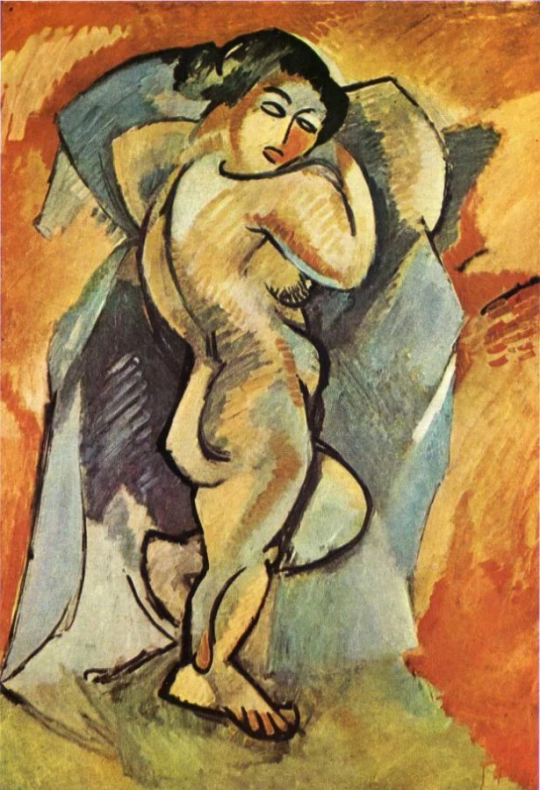
The early era of Cubism (1906/1907-09) was influenced by these two painters who changed the primary subject in their artworks; they no longer imitated nature, but instead created their own reality. It was a continuation of the analytical Cubism formed by Picasso and Braque. Their motifs are not only portrayed from various perspectives simultaneously but are also fragmented into smaller forms, which let them become set pieces of a physical whole.

However, with the start of the First World War, the situation of the artists changed. Many artists in that era were still young, and they were mostly conscripted to military service. Communication between them was disrupted and Cubism as an independent artistic style was lost in the confusion.
1 note
·
View note
Text
Le Festival du Roi Abdulaziz ressuscite le patrimoine de la fauconnerie dans le monde
Le Festival du Roi Abdulaziz ressuscite le patrimoine de la fauconnerie dans le monde
Le Festival du Roi Abdulaziz ressuscite le patrimoine de la fauconnerie dans le monde Ouagadougou, 22 déc. 2022(AIB)-Le Festival de la fauconnerie du roi Abdulaziz a réussi à faire revivre, le hobby de la fauconnerie et a ressuscité son patrimoine dans la région du Golfe et dans le monde, grâce aux compétitions de sa cinquième édition qui a réuni 2256 fauconniers issus de 12 pays du monde entier…

View On WordPress
0 notes
Photo

Henri Le Fauconnier (Français, 1881-1946), Paysage, 1912, huile sur toile, 55 x 46 cm, Essen, Musée Folkwang
#Henri Le Fauconnier#Le Fauconnier#artistes français#french artists#arbres#trees#peinture#painting#huile sur toile#oil on canvas#cubism#cubisme
26 notes
·
View notes
Text

Paris, Salon d'Automne (1912).
Exposition de Kupka, Modigliani, Csaky, Picabia, Metzinger et Le Fauconnier.
#Paris#Salon d'Automne (1912).Exposition de Kupka#Modigliani#Csaky#Picabia#Metzinger et Le Fauconnier.
6 notes
·
View notes
Photo

Jäger by Henri Le Fauconnier 1912.
8 notes
·
View notes